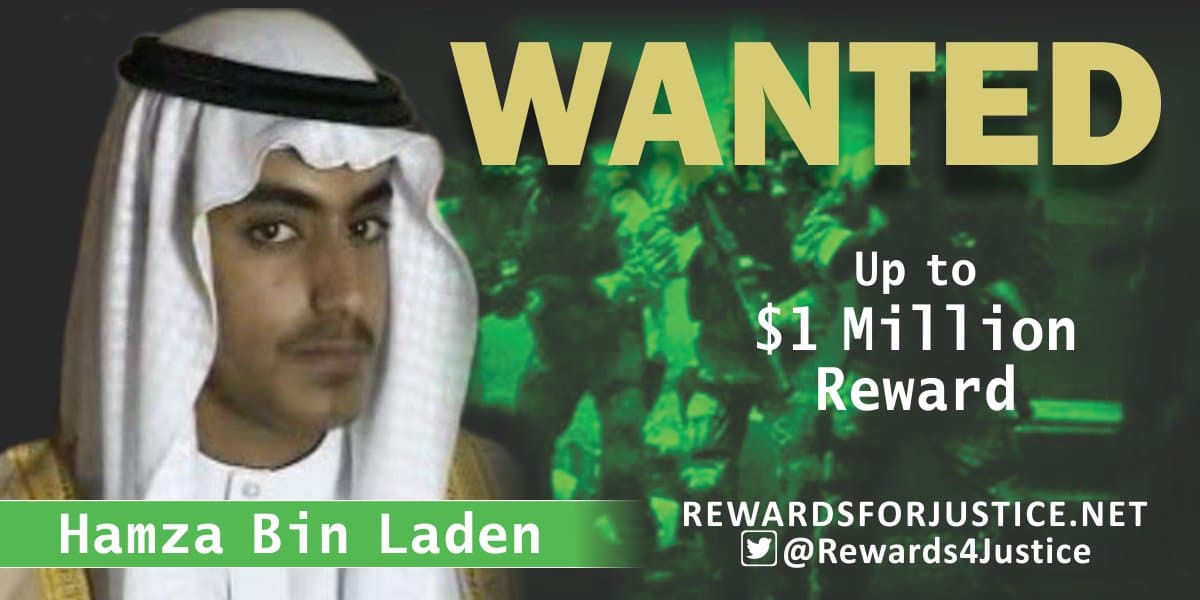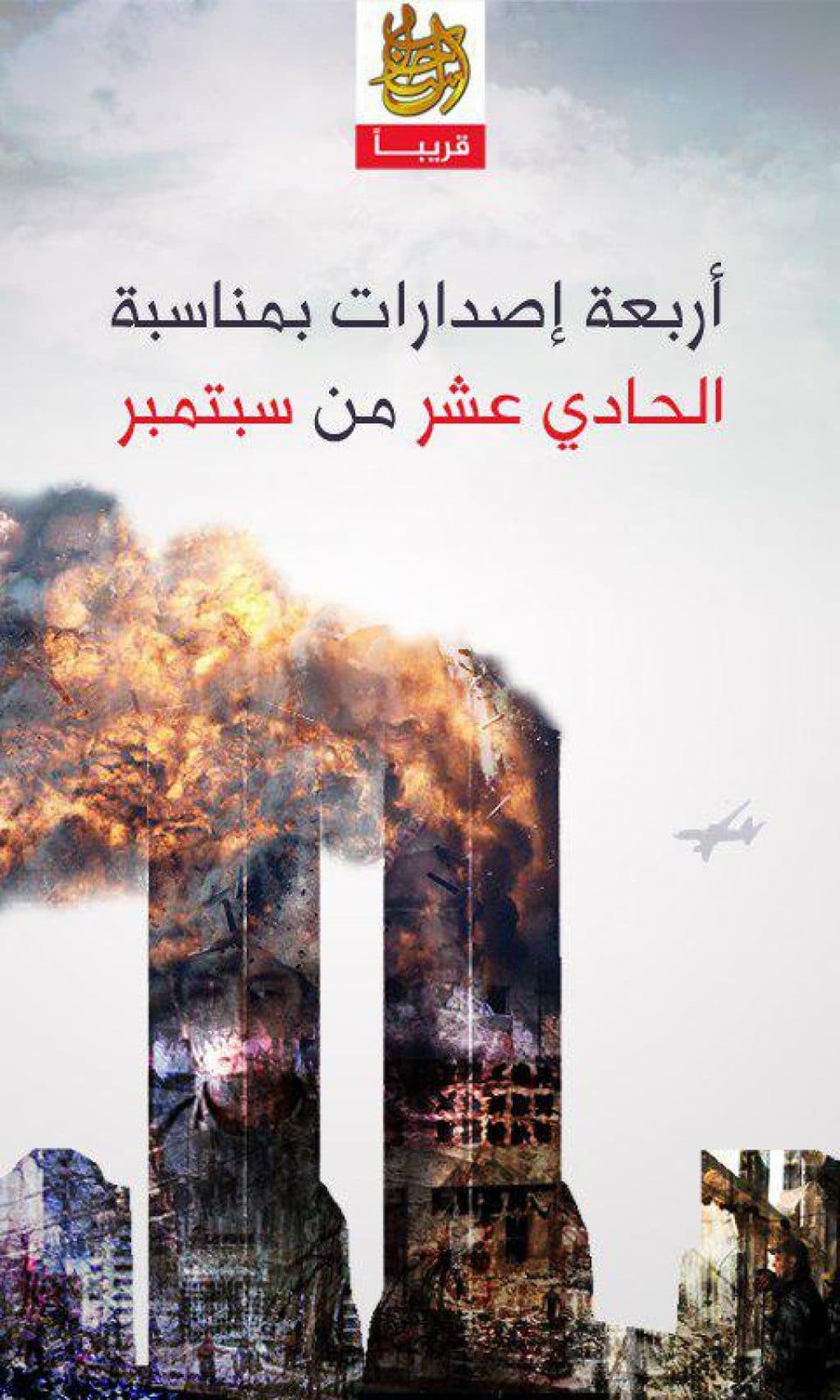September 16, 2019 | FDD's Long War Journal
Key questions concerning Hamza bin Laden’s life remain unanswered
September 16, 2019 | FDD's Long War Journal
Key questions concerning Hamza bin Laden’s life remain unanswered

The State Department released this wanted poster for Hamza bin Laden, using an image from his wedding video, in February.
On Sept. 14, President Donald Trump said in a statement that Hamza bin Laden, a “high-ranking” al Qaeda member and Osama bin Laden’s son, had been “killed in a United States counterterrorism operation in the Afghanistan/Pakistan region.”
The statement, which was likely sourced to analyses prepared by the U.S. Intelligence Community, provides few details. We are left with a number of unanswered questions concerning Hamza bin Laden’s life and career.
How did the U.S. determine that Hamza is dead? Al Qaeda hasn’t confirmed it. And American officials haven’t explained, on the record, how they are sure he departed.
This isn’t to say that Hamza lives. We just don’t know how authorities are certain he is dead. As of August, Secretary of Defense Mark Esper wasn’t even sure of the details. Even if the U.S. government cannot share everything it knows, some additional information, beyond what has been reported, would be helpful.
Furthermore, when did Hamza die — exactly? In February, the U.S. State Department released a reward of up to $1 million for information on his whereabouts. The U.S. must have thought that he was alive at that time. But when Hamza’s death was first reported several weeks ago, officials told the press that he may have perished well before then.
Where was Hamza killed? The president’s statement mentions the “Afghanistan/Pakistan region,” which is of course broad. The U.S. certainly knows where this “counterterrorism operation” took place, so it should be easy to pinpoint where the U.S. hunted him down.
Perhaps most importantly, we still do not know what precise operational role the junior bin Laden played. “The loss of Hamza bin Ladin not only deprives al Qaeda of important leadership skills and the symbolic connection to his father, but undermines important operational activities of the group,” the president’s statement reads. “Hamza bin Ladin was responsible for planning and dealing with various terrorist groups.”
Which terrorist groups? We don’t know.
The Afghanistan-Pakistan region is teeming with al Qaeda-linked terrorist organizations. The White House’s statement implies that Hamza dealt with multiple entities, perhaps even terrorists who operate globally. Given Hamza’s public allegiance to the Taliban, we shouldn’t be surprised if he was working to resurrect the authoritarian Islamic Emirate of Afghanistan.
Hamza was clearly an important voice for al Qaeda. The organization counted on him to speak to a younger generation of jihadists and would-be recruits.
In his inaugural address, posted online in Aug. 2015, the junior bin Laden lauded al Qaeda’s regional branches. He also restated his father’s longstanding conspiracy theory about the “Zionists” and “Crusaders” supposedly teaming up against Muslims. In subsequent messages, Hamza called for regime change in Saudi Arabia (another one of his father’s favorite motifs), tried to rally the fractious jihadists in Syria, crowed that al Qaeda has grown despite the years of war following the 9/11 hijackings, warned of Shiite expansion throughout the Middle East, and offered advice to aspiring terrorists seeking to strike in the West and elsewhere.
These were only a few of the topics Hamza addressed. Al Qaeda’s propaganda arm, As Sahab, also promoted Hamza in other ways.
For example, on the 16th anniversary of 9/11 in 2017, As Sahab released the banner below. An image of Hamza as a young boy was superimposed on one of the Twin Towers. The message was clear: Hamza was not only the biological heir of Osama, he was also an ideological heir — a young man willing to pick up the banner of his fallen father.

On the 16th anniversary of 9/11 in 2017, al Qaeda superimposed an image of Hamza as a child on one of the Twin Towers.
Thus, Hamza was clearly a prominent voice for al Qaeda — a rising figure to rally around. The bin Laden name probably didn’t hurt with donations either.
Al Qaeda also took steps to protect him. Until FDD’s Long War Journal convinced the CIA to release Hamza’s wedding video in 2017, the only publicly-available images (such as the one above) showed him as a boy. His wedding video provided more current images of him as a young man. But these were still not up to date. Al Qaeda didn’t provide more recent images — an indication that the jihadists were concerned about Hamza’s security and didn’t want people to know what he looked like, even as his voice was promoted around the globe.
But how significant was Hamza within al Qaeda? Again, the truth is we don’t really know.
Al Qaeda doesn’t release organizational charts showing how the group is structured, or which men hold specific positions. It is left to observers to tease out specific details concerning al Qaeda’s organizational scheme.
Some have speculated that Hamza was the heir apparent for al Qaeda. While it is possible that he could have inherited his father’s terror empire some day, it seems unlikely that he was next in line. Al Qaeda is not a monarchy and there are other, more veteran operatives waiting in the wings should Ayman al Zawahiri finally perish.
Al Qaeda has yet to comment on the reports of the junior bin Laden’s demise. Assuming Hamza is in fact dead, this is not unusual. The group often takes its time when issuing formal eulogies. If, and when such a statement is posted online, it will be interesting to see what al Qaeda says about Hamza’s career.
Still, we are left to ask: Which “terrorist groups” were working with Hamza? Were these groups based solely in the Afghanistan-Pakistan region? Or do these same groups have an international reach? What was he “planning”?
Counterterrorism analysts and reporters have pieced together the publicly-available evidence into a coherent narrative. But key aspects of Hamza bin Laden’s life are still obscured from the public’s view. The U.S. government should release more details concerning Hamza bin Laden’s terrorist career and reported death.